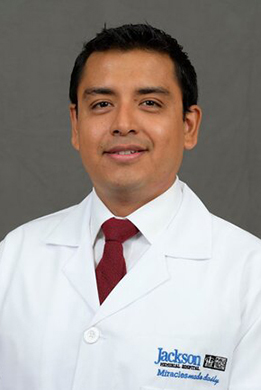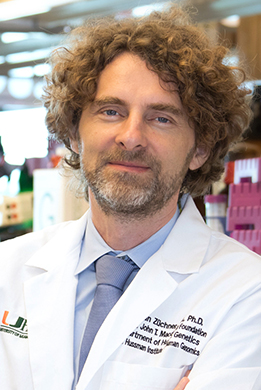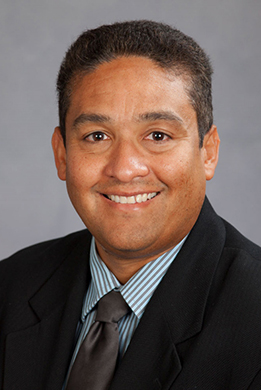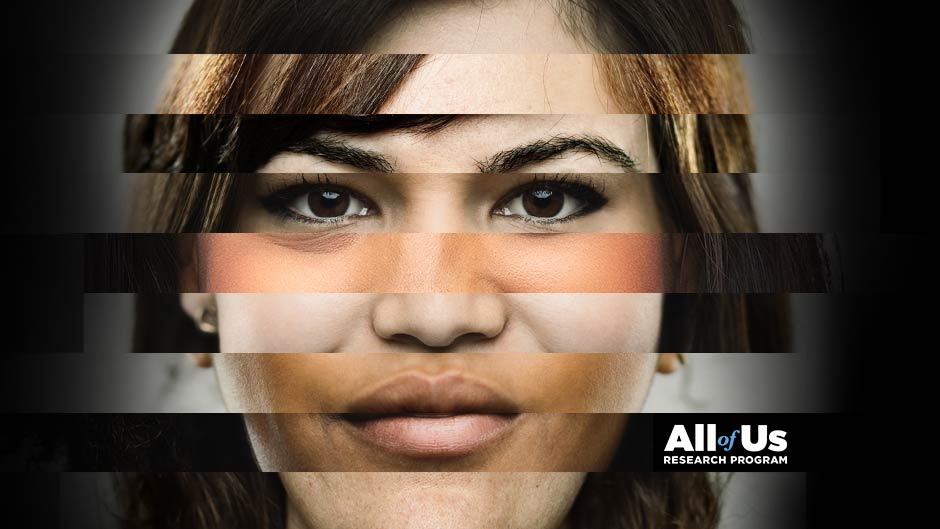An immigrant from Peru, Dr. Raúl Montañez-Valverde was surprised to encounter perplexing research showing that Latinos in the United States are at lower risk of heart disease than their white counterparts—despite a generally lower socioeconomic status and access to health care.
“It prompted me to think about why Hispanics could have better outcomes, given all the challenges,” said Montañez-Valverde. “I was very curious about this question.”

So curious that, despite his intense schedule as a second-year internal medicine resident at Jackson Memorial Hospital, Montañez-Valverde jumped at the chance to use the All of Us Research Program’s Researcher Workbench to investigate the long-debated validity of what’s known as the Latino Epidemiological Paradox. Now open to investigators from all disciplines and career stages across the University of Miami, the Researcher Workbench contains the de-identified electronic health records of more than 200,000 people across the United States—including 10,000 from Greater Miami—who have enrolled in the most inclusive study ever undertaken by the National Institutes of Health.
Launched in 2018, the 10-year, $2 billion-plus All of Us Research Program (AoURP) is building one of the world’s largest and most diverse health datasets by collecting lifestyle, health, and genetic information from 1 million people of all races, ethnicities, backgrounds, and gender identities living in the U.S. The ultimate goal is to advance personalized medicine by helping researchers and physicians like Montañez-Valverde understand why different people are more vulnerable to different diseases and conditions and tailor prevention, treatment, and care approaches specifically for them.
But neither the AoURP nor the University’s Miller School of Medicine, which is leading the AoURP’s effort to recruit some 80,000 of the 1 million participants from Florida and Georgia, are waiting for the enrollment process to conclude before making the data available to researchers. The University has signed a data-use agreement with the NIH allowing any faculty members, research assistants, students, residents, or other trainees with an NIH eRA Commons account to begin mining the treasure trove, which will grow in both value and volume as more people discover its riches.

“The Researcher Workbench is a major milestone in fulfilling the promise of the All of Us program, but for now it may be one of the best kept secrets in biomedical research,” said Stephan Züchner, professor and chair of the Dr. John T. Macdonald Foundation Department of Human Genetics and the lead principal investigator for the AoURP’s Southeast Enrollment Center (SEEC), which also includes the University of Florida, Emory University, and Morehouse School of Medicine.
“At the end of the day,” continued Züchner, who also co-directs the John P. Hussman Institute for Human Genomics, “we want to work with data to create new knowledge and insights into medicine, and the workbench is a major tool for that. What’s exciting is that it opens biomedical data access to many qualified investigators, including people in the social sciences, basic sciences, sports, even the arts. The possibilities are endless, and there will be a lot more of them as the data get richer and larger over time.”
For the time being, the cloud-based research platform, which requires proficiency with the R or Python programming languages, does not include the genetic information that most interests researchers like Züchner. But as he noted, the AoURP is currently sequencing the genomes of the first 100,000 participants and plans to do the same for all 1 million participants—all of which eventually will make its way into the database and the hands of those who shared their DNA.
Yet even in its infancy, the workbench already contains four types of data. In addition to the electronic health records of roughly 203,000 people, the database includes survey data from more than 315,000 people who answered questions about their medical history, lifestyle, access to care and, more recently, experiences with COVID-19, including the pandemic’s impact on their mental and financial health. It also contains physical measurements—including blood pressure, heart rate, and body mass index—from more than 260,000 people, and data collected by the Fitbit wearable devices of more than 8,000 people.
But for Dr. Olveen Carrasquillo, an expert in health disparities who serves as the SEEC’s participant engagement lead, the most exciting aspect of the AoURP is its success in recruiting minorities who have long been overlooked by medical research. According to the AoURP, about half of the participants whose data is in the Researcher Workbench are people of color.

“One of my biggest concerns was that this project would be like everything else, and minorities would be left out, but we’ve seen really robust and good efforts at assuring they are included,” said Carrasquillo, professor of public health sciences, chief of the Division of General Internal Medicine, and a co-principal investigator for the AoURP. “And by minorities, I mean that in the full sense, not just race and ethnicity, but by income, education, gender identity. So, with lots of data on minorities, this humongous data source will be a very powerful tool for people who want to reduce health disparities and improve health equity.”
To get an idea of its power, Carrasquillo enlisted Montañez-Valverde, the resident he happened to meet on the Metrorail after leaving Jackson Memorial one night, to become one of the University’s first workbench users. At the time, Montañez-Valverde, who plans to specialize in cardiology, wasn’t familiar with the AoURP, or the Latino paradox. But he shared Carrasquillo’s skepticism that, given their higher rates of diabetes and uncontrolled blood pressure, Latinos would have better cardiovascular health than their white counterparts, as other studies have shown.
Montañez-Valverde was amazed to learn he would have the electronic records of more than 200,000 people to analyze, “a powerful tool” that helped him conclude that Latinos in the AoURP dataset actually have a higher, not lower, or similar prevalence of cardiovascular disease, than whites. He was just invited to present those findings at the American College of Cardiology’s 70th annual scientific session in May.
“What we saw clearly does not support the Latino paradox,” Carrasquillo said. “But that’s only in this database, so for now we’re just throwing more fire on a debate that’s been raging for 25 years.”
But not subject to much debate will be the growing value of using the AoURP Research Workbench for research and discovery. “As the data grow, the research is going to be a lot more powerful, meaningful, and useful,” he said.
To learn more about the workbench, visit the All of Us Research Hub or listen to an overview by Drs. Züchner and Carrasquillo presented by the Clinical and Translational Science Institute. For more information about or to enroll in the study, visit the All of Us Research Program.

